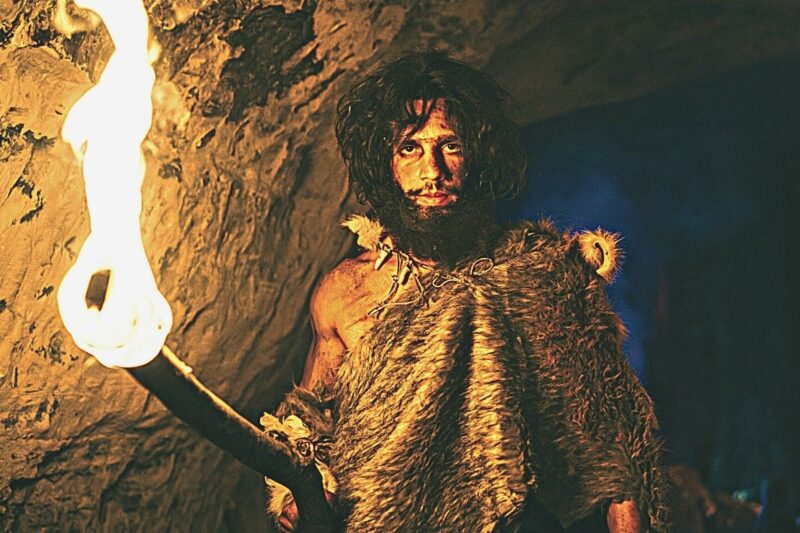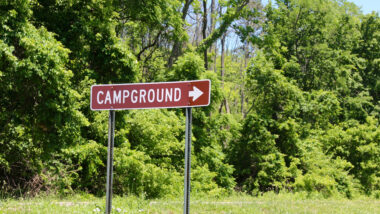Table of Contents Show
Have you heard about the legend of the red-haired giants that lived in Nevada thousands of years ago? These cannibals threatened the Paiute people and other Native American tribes until one day, they banded together to defeat their enemies at Lovelock Cave.
Believe it or not, there are reasons why this ancient story might have some truth to it. Let’s learn more about the discovery of these red-haired giants and the history of the land near Lovelock Cave, Nev.
Where Is Lovelock Cave?
On May 24, 1984, Lovelock Cave went on the National Register of Historic Places. The dry conditions rather than the typical moist conditions of most caves make this cave particularly conducive to preservation.
This means organic and inorganic materials from long ago were here. Ancient peoples lived in this cave for 4,000 years, and the artifacts recovered shed some light on their culture and life in the Great Basin.
Humboldt Sink, Lovelock Cave’s location, is a valley that was once completely under Lake Lahontan. Also known as Bat Cave, Horseshoe Cave, Sunset Guano Cave, and Indian Cave, Lovelock Cave is 20 miles south of Lovelock, Nev., near the Humboldt State Wildlife Management Area.
As you travel south along Interstate 80 from Lovelock to Fernley, you’ll pass the area on the west. Highway 397, or Lovelock Cave Backcountry Byway, will take you to the cave.
Note the byway begins on paved roads but transitions to dirt, backcountry terrain, so make sure your vehicle has good tires before venturing out to Lovelock Cave. Reserved parking is at the cave and a trail that leads to the cave’s entrance.
How Was Lovelock Cave Discovered?
In 1886, the Paiutes told a local mining engineer about the cave and took him to the site to prove its existence.
He couldn’t get an archeological excavation underway, but in 1911, two miners started digging out guano, bird, and bat excrement, which is a perfect fertilizer. However, they had no interest in using the guano for fertilizer; they wanted to use it for gunpowder.
During their excavation, the two miners contacted Alfred Kroeber, founder of the University of California Anthropology Department, when they discovered artifacts inside the cave. The first true archaeological dig started in 1912. A second dig took place in 1924.
When the findings report was released, about 10,000 artifacts were found, from tools to bones to weapons. Duck decoys — with features still attached — were also discovered, making them the oldest known duck decoys in the world. Radiocarbon dating found human bones dating back to 1450 BC.
Were Red-Haired Cannibalistic Giants Really Found in a Cave in Nevada?
Mummified remains of a man who was over six feet tall were found in Lovelock Cave. Additionally, the researchers discovered a 15-inch sandal.
As with all sensational discoveries, controversies, debates, legends, and conspiracies followed. Media personnel and entrepreneurs looking to establish a tourist attraction or make a name for themselves grabbed hold of this news story. They created a narrative about red-haired cannibalistic giants. However, the story isn’t as off-based as it appears.
Keep in Mind: Have you heard the legend of the Devils Tower? If not, you need to!

In her book, Fossil Legends of the First Americans, Adrienne Mayor discusses the oral traditions of Native Americans and the stories they have accepted into their culture. The Paiute legend of the red-haired giants is one of those stories. Sarah Winnemucca Hopkins, daughter of a Paiute Indian chief, wrote about this legend her ancestors passed down in 1882.
Mayor explains in her book that these skeletal remains were within 100 miles of fossils of much larger creatures like mammoths and bears. The assumption that these were giants could easily have been made by untrained, everyday people.
She also explains that hair pigment doesn’t remain after death. However, the conditions within Lovelock Cave could have turned dark hair a reddish color, so the claim isn’t that far-fetched.
Where Did the Red-Haired Giants Legend Come From?
The Paiute people have a story passed down from generation to generation. The Si-Te-Cah or Sai’i is a legendary tribe of vicious, cannibalistic red-haired giants.
As mentioned above, Sarah Winnemucca Hopkins wrote down this oral tradition in 1882. In her book, she details a great battle that led to their deaths at what is now Lovelock Cave.
Si-Te-Cah means “tule eaters,” which refers to a plant the giants used to make rafts to escape the Paiutes. Lake Lahontan was an ancient lake in the area. The legend explains how all tribes came together to defeat these red-haired giants.
After backing them into a cave, the Paiutes started a fire at its entrance. The Si-Te-Cah, who didn’t try to escape, burned alive or suffocated, while tribe members killed any deserters leaving the cave.
Keep in Mind: After you hear the story of the Hitchhiker of Black Horse Lake, you’ll never want to give a stranger a ride!
What Else Did They Find in Lovelock Cave?
In addition to the duck decoys, the 15-inch sandal, and human remains, the archeological digs found an incredible assortment of items that give us a glimpse into life thousands of years ago. Excavators found woven basket fragments, stone smoke pipes, shells, an antique duck call, and more.

You can see many of these items in the Humboldt Museum located off Interstate 95 in Winnemucca, Nev. The Nevada State Museum houses some of the basketry and bones, while the National Museum of the American Indian in Washington, D.C., houses the ancient duck decoys.
Did Giants Really Exist?
Depending on your definition of giants, there may have been a tribe of giant cannibals roaming Lake Lahontan thousands of years ago. The remains found indicate that humans were above average for that period.
Considering the average height of an American man today is 5 feet 9 inches, it’s not hard to imagine why the Paiute people thought a group of men over six feet tall were giants.
Can You Visit Lovelock Cave in Nevada?
If you’re traveling through Lovelock, Nev., along the Cowboy Corridor, you’ll get a real sense of the Wild West.
There’s plenty of outdoor recreation like camping, horseback riding, and fishing to keep you entertained. Plus, you’ll be in the heart of both the western culture and Native American culture of the area.
Make plans to take the 40-mile round trip from the Marzen House Museum to Lovelock Cave to explore the land where the red-haired giants and Paiute tribe clashed. Perhaps you’ll discover something new hidden inside!






